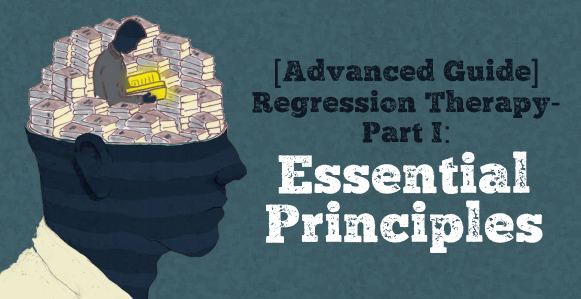
Warning! This 2-part series on regression hypnotherapy contains intermediate to advanced content that will make you a powerful force for good Hypnosis Power in the world.
For ease of use, this guide is divided into two parts.
Part 1 dives straight into the essential principles and best practices that you need to be aware of before doing any regression work.
And in Part 2 the 12-step regression hypnotherapy method, which is taught by the Hypnosis Training Academy, is broken down, step-by-step.
And to show you how to piece it all together, in Part 2 there is also a bonus training video of master hypnotist Igor Ledochowski performing this powerful regression hypnotherapy method on a woman with a serious snake phobia.
To view the individual sections of Part 1, click on the links below (or continue reading):
- Before You Get Started
- Why Regression Therapy?
- The Truth About Regression & Memory
- Where Does Trauma Come From?
- Hypnotherapy & Memory: Connecting The Dots?
- Regression vs. Revivification: What’s The Difference?
- Managing An Abreaction
- Behavioral Principles Essential To Regression Therapy
- Creating Client Confidence Through Tone Of Voice And Bedside Manner
- A Question Of Privacy: When To Use Content-Free Therapy
- And Remember, It’s Just A Technique!
But first…
Before You Get Started…
Regression is a huge topic.
Given this, it’s impossible to condense all of the relevant information into the space of two articles.
This is why we’ll be focusing on the main underlying principles so you can use this information to enhance your existing knowledge.
Therefore, to understand this article completely and comprehensively, it is recommended that your hypnosis knowledge is of an advanced level.
The other thing you need to keep in mind is this:
Any trauma, phobia or situation where strong emotions exist can be debilitating.
It can make people suffer.
When using hypnotherapy, you’re trying to end that suffering. You’re trying to show people that they don’t need to suffer. That there is another way.
That they’re using their mental landscape in a way that’s causing them to suffer, so if they can change the way that mental landscape operates, they’ll stop the suffering.
Sometimes you can achieve that in 5 minutes. But sometimes it can take a lot longer.
The trick is not to get hung up on the steps involved in regression therapy but to focus on what you’re trying to accomplish.
As you’ll discover in Part 2, the 12 steps simply give you the framework to learn the process.
Once you know the process well enough, you can adapt it to fit the person and the situation. Keep reading>>
>>What are the 5 Keys to Becoming an Elite-Level Hypnotist? Sign up for this complimentary Masterclass followed by Q&A Session with Master Hypnotist, Igor Ledochowski.


No comments:
Post a Comment